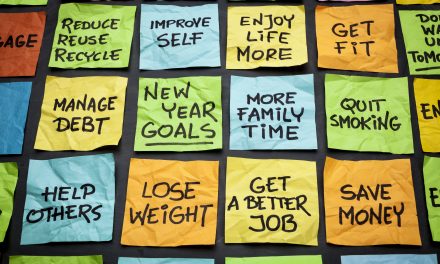Change. The one constant in life.
So, you’d better get comfortable with change because it’s inevitable and there’s no hiding from it… and wouldn’t you prefer to experience change on your own terms rather than someone else’s?
As a kid, I always wanted time to move quickly… at 10 I couldn’t wait until I was 12 so I could go to youth club… at 12 I wanted to be 16 so I could go to work… at 16 I couldn’t wait until I was 18 so I could “legally” drink alcohol… and on it went! Ah, youth is so wasted on the young eh!
Fast forward a few decades and I’m now wondering where the time has gone. As another year ends, I’m left reflecting on the goals I failed to achieve this year and setting those I want to achieve in the next 12 months.
A mentor of mine once told me, “the only reason to look backwards is to see how far you’ve come”. I understand he meant that we shouldn’t dwell on the past but there’s also a danger in not reflecting and learning from the past.
I’m not saying we should live in the past of course, just that we should learn from it. And if we fail to reflect on our past experiences, we’re more likely to repeat the mistakes we made, often with disastrous consequences.
I’m sure you’ve heard the word “reflect” many times but how exactly does one “reflect”?
One of the things I like to do is go back through my day book. For over 25 years I’ve used notebooks of all shapes, sizes and types to keep notes on my activities, my wins and my learns every day… sometimes two or three each year… I must have dozens of them.
When I look back through these books I’m often shocked by the amount of “stuff” I get through in that time. It’s interesting to see the things that stand out, to find the lessons in those things, to consider how I might approach them differently in the future.
These notebooks often double up as my journal… so it’s also a great way of looking back on how my personal life has evolved… I’m firstly looking for the positives, the achievements, and the breakthroughs. It doesn’t matter if their only small, by focusing on the positives I find it lift’s my spirits and encourages me.
Then I ask myself what I’ve learned from both my personal and professional experiences. How did the last twelve months evolve and what will I change over the next twelve months to help me move closer to my long- term vision?
But I can’t stop there… now I must do it over again but this time looking for the challenges, the times things didn’t quite go according to plan, the “opportunities to learn” as we call them.
Again, I’m looking at how I’ve shown up in both personal and professional aspects of my life… What happened? What did I learn? And again, ask myself how this is all helping me move closer to my vision?
There’s that word again…. vision.
In my early days as a business owner I read, several times, that I needed to have three statements…. a Vision Statement, a Mission Statement and a Values Statement!
My first reaction was, “what the hell are they?” My second was, “I run a small business, why do I need these bloody statements?”
My third was, “what the hell is the difference?”
“Dave, it doesn’t matter how small your business is today”, said my mentor, “If, you have any ambition to grow you must behave as if you have already reached that growth you aspire to.”
He helped me understand how each of these statements has its own distinct function in the strategic planning process.
“The greatest danger for most of us is not that our aim is too high and we miss it, but that it is too low and we reach it”– Michelangelo
Your vision statement should describe your business as it will look when it’s finished and you’ve achieved all your strategic goals? Create a mental image of the future to challenge and inspire your staff.
In contrast, your mission statement explains the reason your business exists. It describes what the company does and its overall intention… it supports your vision and communicates your purpose and direction to staff, customers, suppliers and other stakeholders. Your mission may change to reflect the priorities and methods you use to accomplish your vision.
Finally, your values statement describes what you believe in. It creates a moral compass and defines the deeply held beliefs and principles of the culture in your business.
I’ll speak into mission and values statements in our next issue but, for now, let’s look at why we need a vision and how to create yours?
As the Japanese proverb goes… Vision without action is a daydream. Action without vision is a nightmare.
People often feel overwhelmed and need help so they often look for a magic tool, workbook or some other technique to help create their vision.
Here are a couple of methods you can use to gain some clarity… remember, if you don’t know what you want, you’ll end up with what you get!
Direction – Vision gives us something to work towards, so we can go through our days knowing we’re working towards what we want in life – and what’s truly important to us. This clarity of direction helps us make the right decisions and choices – for us.
Inspiration – A life vision should be inspirational. If your life vision is vague, or worse, boring, you’re not going to want to take action.
The Vision Clarity Exercise document can be found in the Strategy folder of your Renegade Toolbox describes a number of great exercises that can unblock your creative thoughts.
Begin with the series of 3 simple, but powerful one-page life vision exercises to help you connect with yourself and what you truly want from life.
- On your 90th birthday, from your favourite chair, look back over your life and what you’ve achieved.
- Work back from 10yrs to get a sense of what you need to do NOW to achieve your 10 year goals.
- Consider where you’d like to be in 3mths then ask yourself what stops you from achieving that vision?
When you do these first 3 exercises in sequence you begin to get a broad overview of the vision you have for your life, then gradually bring it back to the present day.
This tells you what to focus on now that will fit beautifully into the overall vision you have for your life.
If these don’t unlock your creativity there are further exercises that will help;
- What would you want said about you in your eulogy?
- What you would like your ideal day to be like?
- If you were to meet, what would your future-self tell you about your life?
- If you had a magic wand, what life would you create for yourself?
- What would you like your life to look like in each area of the Wheel of Life?
- Create a Vision Board. Cut out pictures, quotes – anything inspiring that represents the life you want for yourself.
The more you write, the more exercises you do, the more detail you’ll go into… and the richer and detailed your life vision is, the more meaningful and inspiring it will be.
There are endless ways to create a strategic life vision. Take an idea, play with it.
Get creative and have fun!





